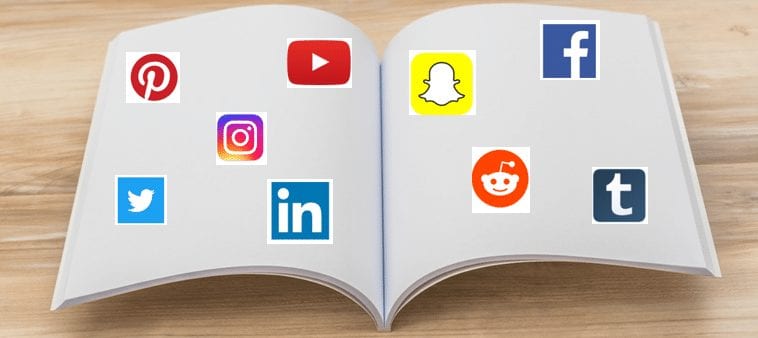Social Media Jargon
There is so much going on in the world of social media, that many times we find ourselves having a hard time keeping up with even simple things such as the ever-evolving Lingo (“the dialect of social media”). Abbreviations and acronyms are tricky to decode, and deciphering a simple text message from a friend or your child may seem like they call for a translator. In order to protect your family, it is essential that you make yourself familiar with their “lingo.” Check out our Tech Tip to read about what we think are the “basics”:
Abbreviations: They are everywhere! Sometimes trying to read what is supposed to be a simple text, turns into a mission to decode a highly-encrypted message. It may seem that only the designated recipient will be able to decipher these texts. In some cases this may be true; However learning a few abbreviations may hold the key! Here are some of the most common ones used:
- IRL – In Real Life
- TBH – To Be Honest
- SMH – Shaking My Head
- IDK – I Don’t Know
- BRB – Be Right Back
- TTYL – Talk To You Later
- OMW- On My Way
- BTW- By The Way
- HMU- Hit Me Up(Get In Touch)
F4F: This means “Follow for Follow”, which is an invitation to follow a user on Twitter or Instagram with the assurance that they will follow back.
…..
Hashtag: The Hashtag (or “#”) was initially used on Twitter. It was used to get involved in a conversation or search for a specific topic. For example, if you went on Twitter and typed “#TechWise Group” in the search bar, all Tweets that had that specific hashtag in them would show up.
…
Wiki: A Wiki is a very simple website that can be modified by other users.
…
Tweet: A tweet is a post on Twitter. The actual process of writing a Tweet is called “tweeting”. Those Tweets can only be 140 characters long, which is why you have to be short and precise in bringing your message across.
…
Tweeps: This is an abbreviation for Twitter + People = Tweople.
…
Microblogging: This term refers to any post on Facebook or Twitter for example, as those are short messages from a social media account.
…
GIF: [gif,jif] An animated GIF file is a combination of graphic images that repeat themselves over and over again. GIF actually stands for Graphics Interchange Format and refers to image files that are compressed to reduce transfer time. A GIF file contains multiple images that are set to display as an animation.
…
Newsfeed: A Newsfeed refers to the space where news and updates from other network users are being displayed in real-time. On some social media platforms you have to actually follow or like another user in order to be able to see their posts to the newsfeed.
…
Handle: This refers to a person’s username on Twitter. TechWise Group’s Twitter handle for example is “@TechWiseGroup”.
…
AMA: On Reddit, this is an acronym for “Ask Me Anything.” In an AMA post, a user will answer questions posed by the Reddit community.
…
Avatar: An avatar is a visual representation of a user in the online world. It does not necessarily have to be an actual photo of the user; in fact, an avatar does not have to have a specific look at all. Every user creating their own avatar may design it however they wish.
…
Catfish: A catfish is someone who pretends to be someone else. Those people typically use any of the social media platforms to create false identities with the intention to mislead other users. The most common activity by a catfish is to pursue deceptive online romances.
…
Meme: A meme is an image with an imposed statement that passes through social media channels. Usually, a meme is a funny image or video that spreads throughout the Internet.
…
Troll: A troll is a social media user who intentionally tries to offend or annoy other users or groups within that specific social media platform by posting provocative statements.
…
Bitmoji: A Bitmoji is a customized emoji or avatar that can be created on the app itself and then added to virtually any online network. After creating your Bitmoji, you can then access a sticker library featuring the avatar in various scenes, behaviors, moods, etc.
…
To Creep: In the context of social media, to creep means to spend an extended period of time looking through someone’s social profiles and look at their photos, videos, and posts.
…
Phishing: Phishing is an attempt of someone trying to illegally acquire sensitive information such as usernames, passwords, and credit card information by sending out authentic-looking electronic communication, usually in the form of an email.
…
Geofilter: Geofilters are special “overlays” or frames within Snapchat that allows users to reflect the geographic location they are in.
…
Connection: On LinkedIn, there are several types of connections you can make. The basic type of connection is a 1st degree connection—a contact that you know personally or professionally and that has accepted your invitation to connect.
…
Pins: A Pin is a favorite link stored on Pinterest. Each Pin is made up of a picture and a description given by the user. By clicking on a Pin, the user is being sent directly to the image source page.
…
Selfie: A (at this point probably very well-known) Selfie is a self-portrait photograph that is usually being taken with a smartphone and then shared on social media sites.
…
Regram: This is the act of reposting another Instagram users image or video.


